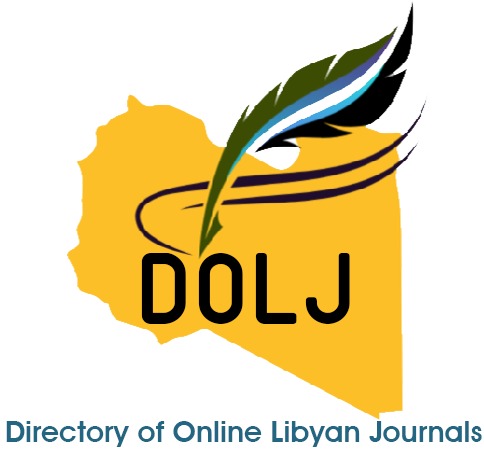Prevalence of Iron Deficiency Anemia Among School Students in Tripoli, Libya
Abstract
The most prevalent nutritional problem in the world is iron deficiency anemia. It is a disorder where anemia develops because there is insufficient iron present to maintain normal red cell synthesis. During childhood Iron deficiency is the most prevalent hematologic disorder, it approximately affects 48% of the children aged between 5 and 14 years in developing countries. This study aimed to determine the prevalence of iron deficiency anemia among schoolchildren in Tripoli, Libya, ages 12 to 18 years. In addition to assessing students' behavior, and also looked at parents' levels of knowledge and awareness on the importance of iron for students' health. A cross-sectional study was conducted in 7 randomly selected preparatory and secondary schools in three different regions of Tripoli City-Libya. The number of students from each school in these regions were chosen according to the consent of student’s parents or their guardian. A structured questionnaire design was distributed between student’s parents to measure the level of awareness, knowledge, daily practices and health profile of the participants and their families. A total of 105 students aged between (12-18) years were enrolled in this study. Blood samples were collected and were used to estimate the level of hematological parameters such as, Hemoglobin, Mean Cell Volume, Mean Cell Hemoglobin, Serum iron and total iron binding capacity. The data was analyzed using Statistical Package for the Social Sciences software, version 26. Frequencies, propor-tions, and rates of the given data for each variable was calculated. The overall prevalence of iron de-ficiency anemia was 15.2%. The rate of iron deficiency anemia in females was higher than males (21.2% vs 5.1%), and was also higher in secondary schools than the preparatory schools (22.2% vs 4.8%). Poor knowledge regarding iron-rich nutrients and their absorption, as well as improper daily healthy practices that lead to iron deficiency anemia have generally been noted. Although iron deficiency anemia occurring in all age groups with various rates, it is more prevalent in secondary school females. Correction of iron deficiency anemia at this age group improves children's ability to study, increases their level of fitness and work capacity, and critically raises girls' chances of becoming safe mothers in the future. Therefore, health education programs should be implemented in schools to highlight the risk factors of anemia and to encourage the intake of diverse diets including iron-rich foods.
تعد مشكلة فقر الدم الناجم عن نقص الحديد من أكثر المشاكل الغذائية انتشاراً في العالم. وهو اضطراب يتطور فيه فقر الدم بسبب عدم وجود كمية كافية من الحديد للحفاظ على تخليق خلايا الدم الحمراء بشكل طبيعي. خلال مرحلة الطفولة، يعد نقص الحديد من أكثر اضطرابات الدم انتشاراً، حيث يصيب ما يقرب من 48% من الأطفال الذين تتراوح أعمارهم بين 5 و14 عاماً في البلدان النامية. هدفت هذه الدراسة إلى تحديد انتشار فقر الدم الناجم عن نقص الحديد بين أطفال المدارس في طرابلس، ليبيا، الذين تتراوح أعمارهم بين 12 و18 عاماً. بالإضافة إلى تقييم سلوك الطلاب، كما بحثت في مستويات معرفة ووعي الوالدين بأهمية الحديد لصحة الطلاب. أجريت دراسة مقطعية في 7 مدارس إعدادية وثانوية تم اختيارها عشوائياً في ثلاث مناطق مختلفة من مدينة طرابلس-ليبيا. تم اختيار عدد الطلاب من كل مدرسة في هذه المناطق وفقًا لموافقة أولياء أمور الطلاب أو ولي أمرهم. تم توزيع تصميم استبيان منظم بين أولياء أمور الطلاب لقياس مستوى الوعي والمعرفة والممارسات اليومية والملف الصحي للمشاركين وأسرهم. تم تسجيل ما مجموعه 105 طالبًا تتراوح أعمارهم بين (12-18) عامًا في هذه الدراسة. تم جمع عينات الدم واستخدمت لتقدير مستوى المعايير الدموية مثل الهيموجلوبين ومتوسط حجم الخلايا ومتوسط الهيموجلوبين في الخلايا والحديد في المصل والقدرة الكلية على ربط الحديد. تم تحليل البيانات باستخدام برنامج الحزمة الإحصائية للعلوم الاجتماعية، الإصدار 26. تم حساب الترددات والنسب ومعدلات البيانات المعطاة لكل متغير. كان معدل انتشار فقر الدم الناجم عن نقص الحديد بشكل عام 15.2٪. كان معدل فقر الدم الناجم عن نقص الحديد لدى الإناث أعلى من الذكور (21.2٪ مقابل 5.1٪)، وكان أيضًا أعلى في المدارس الثانوية منه في المدارس الإعدادية (22.2٪ مقابل 4.8٪). لوحظ عمومًا ضعف المعرفة فيما يتعلق بالعناصر الغذائية الغنية بالحديد وامتصاصها، فضلاً عن الممارسات الصحية اليومية غير السليمة التي تؤدي إلى فقر الدم الناجم عن نقص الحديد. على الرغم من حدوث فقر الدم الناجم عن نقص الحديد في جميع الفئات العمرية بمعدلات مختلفة، إلا أنه أكثر انتشارًا بين الإناث في المدارس الثانوية. إن تصحيح فقر الدم الناجم عن نقص الحديد في هذه الفئة العمرية يحسن قدرة الأطفال على الدراسة، ويزيد من مستوى لياقتهم البدنية وقدرتهم على العمل، ويرفع بشكل كبير من فرص الفتيات في أن يصبحن أمهات آمنات في المستقبل. لذلك، يجب تنفيذ برامج التثقيف الصحي في المدارس لتسليط الضوء على عوامل الخطر المرتبطة بفقر الدم وتشجيع تناول أنظمة غذائية متنوعة بما في ذلك الأطعمة الغنية بالحديد
Keywords: Iron deficiency Anemia, School Students, Tripoli-Libya.











